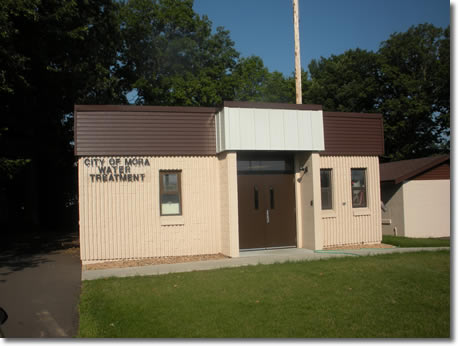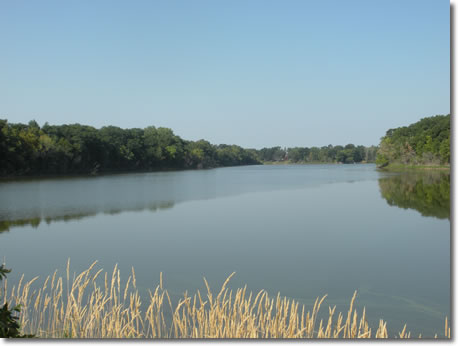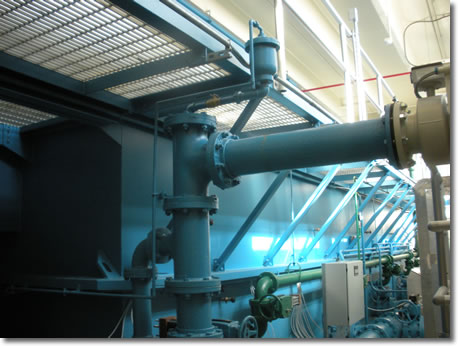Drinking Water Protection
- Drinking Water Protection Home
- About Us
- A-Z Index of Contaminants in Water
- Community Public Water Supply
- Drinking Water Grants and Loans
- Drinking Water Institute
- Drinking Water in Schools and Child Cares
- Drinking Water Revolving Fund
- Laws and Rules
- Noncommunity Public Water Supply
- Source Water Protection
- Water Operator and Certification Training
- Drinking Water Protection Contacts
Related Topics
- Annual Reports
- Drinking Water Risk Communication Toolkit
- Drinking Water Protection External Resources
- Fact Sheets
- Forms
- Invisible Heroes Videos: Minnesota's Drinking Water Providers
- Noncom Notes Newsletter
- Sample Collection Procedures (videos, pictures, written instructions)
- Waterline Newsletter
Related Sites
- 10 States Standards
- Clean Water Fund
- Health Risk Assessment – Guidance Values and Standards for Water
- Minnesota Well Index
- Water and Health
- Wells and Borings
Environmental Health Division
Mora Does More with Less
From the Winter 2013-2014 Waterline
Quarterly Newsletter of the Minnesota Department of Health Public Water Supply Unit, Waterline
A complete list of feature stories can be found on the Waterline webpage.
 |
A 2004 pilot study led to both a reduction in disinfection by-products as well as to a rehabilitated water treatment plant in Mora, a city of about 3,600 residents in east-central Minnesota, approximately 70 miles north of Minneapolis and 90 miles southwest of Duluth.
The treatment plant, first built in 1976 and recently rehabilitated, and the three wells that serve it, are just south of Lake Mora, which is apparently influencing the city’s water supply. Organic material in the water had combined with chorine in the treatment to produce levels of total trihalomethanes (TTHM) and haloacetic acids (HAA5) that exceeded allowable standards in the early 2000s.
 |
The precursors to these by-products are normally associated with surface water, but some ground-water systems are also affected, particularly those that are influenced by nearby lakes and rivers. The treatment plant and two of its wells are less than a quarter-mile from Lake Mora (the other is a few blocks farther south).
Mora water-wastewater superintendent Mike Kroon spoke of “a link to Lake Mora” with their wells, which are drilled into glacial drift and range in depth from 195 to 210 feet. “The static level in the wells is within 13 feet of the lake level,” said Kroon, adding that Gail Haglund, a hydrogeologist with the Minnesota Department of Health (MDH) has been exploring how much influence the lake has on the groundwater as part of the city’s wellhead protection plan.
“We are seeing a connection,” said Haglund, who has examined stable isotopes of oxygen and hydrogen as well as other water-chemistry parameters. She said the plan includes quarterly sampling of the lake and wells over a one-year period. From this information, she said, “We can get a better understanding of it.”
 |
| Mora Lake, just north of the treatment plant and wells, is the subject of a study to determine its connection to the area's groundwater. |
Regardless of the reasons for the organic matter in the water, the city had to take action to reduce its TTHM and HAA5 levels. The pilot study by SEH, Inc. of Vadnais Heights, Minnesota, led to a switch to chloramines as a disinfectant by adding ammonia to the free chlorine. “The chlorine is tied up by the ammonia,” said Kroon, “and the chlorine can’t react to the organics.”
Mora found few utilities in the state that use chloramines, especially systems that are similar in type and size. The city, without others to call on for advice and counsel, relied heavily on the expertise of John Thom of SEH, Inc. and MDH district engineer Dave Schultz, an expert on ammonia. “We asked him a lot of questions,” Kroon said, “and he asked us a lot of questions.
“It took up three to four months to get it under control. Every high-service pump operates at a different speed. We had to get the chlorine dialed in and run one high-service pump for a longer time, so that they matched.”
“There is a balancing act to get the right ratio so that the speciation of chloramines is right,” said John Chlebeck, an engineer with SEH, Inc. “Monochloramine is what’s wanted in the system.”
“You want your monochloramine to equal your total chlorine, so the two are real close together,” Kroon explained. “Then you know you are doing all right. Too much ammonia, and it will start growing out into the system, so it can increase algae growth.”
The chemical adjustment began in late 2005, and the levels of disinfectant by-products dropped dramatically. The city has been well within compliance of the maximum levels allowed for TTHM and HAA5 ever since.
An Extreme Makeover
In tandem with the change in disinfection came a closer look at the condition of the water treatment plant, which had two gravity filters to reduce iron and manganese.
The filters were in need of attention, said Kroon. “The metal was getting thin in one spot, and there were places it had eaten through. We needed a new filter.” A visit by the city’s utility commission provided the final impetus for a rehabilitation of the plant. “They took one look and said, ‘We’ve seen enough,’” Kroon said.
The two gravity filters, each with a capacity of 750 gallons per minute (gpm), were replaced by a 1,000 gpm filter containing greensand and anthracite. Kroon said they looked at the city’s water history and decided that a single filter was all that was needed. The demand has been 250,000 to 350,000 gallons per day, and the city has plenty of storage with a 50,000 gallon clearwell and two towers—one that holds 500,000 gallons and the other 150,000.
A revision in the sewer charge that went into effect in the last 10 years has promoted conservation. “Residents now pay a sewer fee on watering use,” Kroon explained. The city used to base the sewer charge on water usage in the winter months. Now it is determined on the monthly meter reading, causing usage to drop. “That was our plan to conserve water. So people don’t water their yards around here that often. It costs too much.”
The city also monitors individual water bills and contacts a customer if the usage spikes. Someone from the utility investigates, and Kroon says often a leaky toilet is the culprit. “Seldom does it leak for more than a month,” he points out since the customer usually fixes the problem quickly.
The plant makeover had to be done within the footprint of the existing building. Going from two filters to one left the city with room to reconfigure all the space. Chlebeck noted that the plant used to consist of a large open room with the filters, electrical panel, laboratory, bathroom, and the meter room. Only the chlorine was separated from everything else. “The room was really cluttered,” Chlebeck said, “and all the chemicals, with the exception of gas chlorine, were in there.”
Partition walls now isolate the filters from the electrical area and lab as well as chemical and mechanical rooms. In addition, Kroon has an office rather than a desk amid chaos and clutter.
The total project took about nine months, and filters were off-line from October of 2010 to March of 2011. Kroon said they continued to add chlorine, switching back to free chlorine, and fluoride but were without iron-and-manganese removal during this period. Communication with residents and business owners paid off as they had few problems.
Operational costs have gone down since the plant was completed. Kroon said the improved efficiency of the new pumps and controls have reduced electrical usage along with savings on chemicals.
The $1.6 million cost for construction and engineering was financed with a below-market-rate loan through the Drinking Water Revolving Fund along with a raise in water rates over a five-year period to replenish funds from the utility’s capital reserves.
 |
| Mora went from two filters to one with the renovation of its treatment plant. |
The new plant went on line March 17, 2011. Its masonry exterior fits with the surroundings of the industrial park. The old plant was demolished and the wells sealed although the 100,000-gallon tower on the previous site remains.
The final cost of the project was $1,687,000 and financed with a slight increase in water rates as well as through a combined loan and grant package from the Minnesota Department of Health Drinking Water Revolving Fund and Public Facilities Authority in addition to a small city’s grant from the Minnesota Department of Employment and Economic Development.